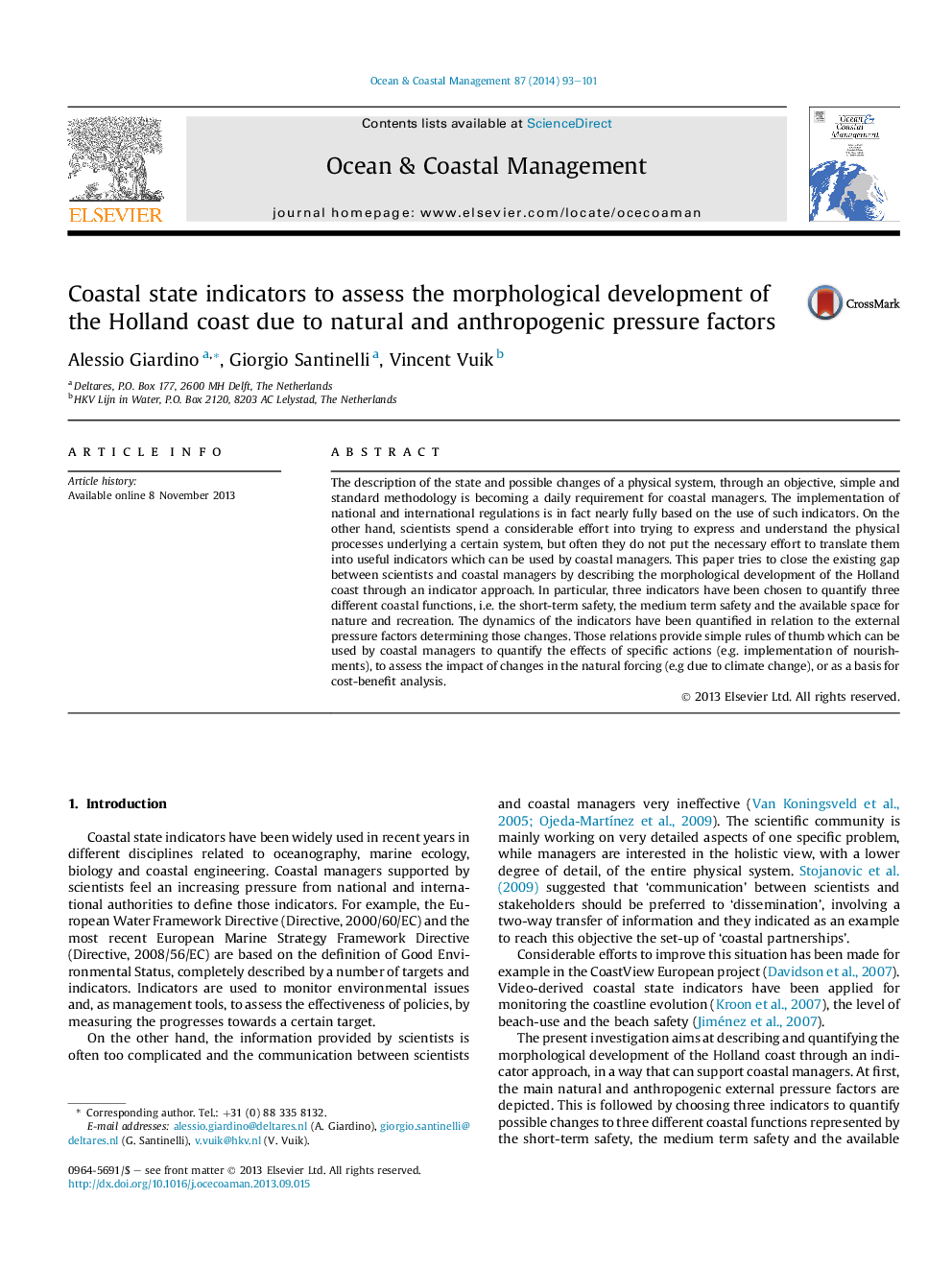| Article ID | Journal | Published Year | Pages | File Type |
|---|---|---|---|---|
| 1723824 | Ocean & Coastal Management | 2014 | 9 Pages |
•Coastal indicators are proposed to assess the development of the Holland coast.•Relations between natural pressure factors and indicators are derived.•Relations between nourishment volumes and indicators are derived.•Relations between short- and medium-term safety and dune foot position are derived.•Rule of thumb formulae are proposed in support of coastal managers.
The description of the state and possible changes of a physical system, through an objective, simple and standard methodology is becoming a daily requirement for coastal managers. The implementation of national and international regulations is in fact nearly fully based on the use of such indicators. On the other hand, scientists spend a considerable effort into trying to express and understand the physical processes underlying a certain system, but often they do not put the necessary effort to translate them into useful indicators which can be used by coastal managers. This paper tries to close the existing gap between scientists and coastal managers by describing the morphological development of the Holland coast through an indicator approach. In particular, three indicators have been chosen to quantify three different coastal functions, i.e. the short-term safety, the medium term safety and the available space for nature and recreation. The dynamics of the indicators have been quantified in relation to the external pressure factors determining those changes. Those relations provide simple rules of thumb which can be used by coastal managers to quantify the effects of specific actions (e.g. implementation of nourishments), to assess the impact of changes in the natural forcing (e.g due to climate change), or as a basis for cost-benefit analysis.
